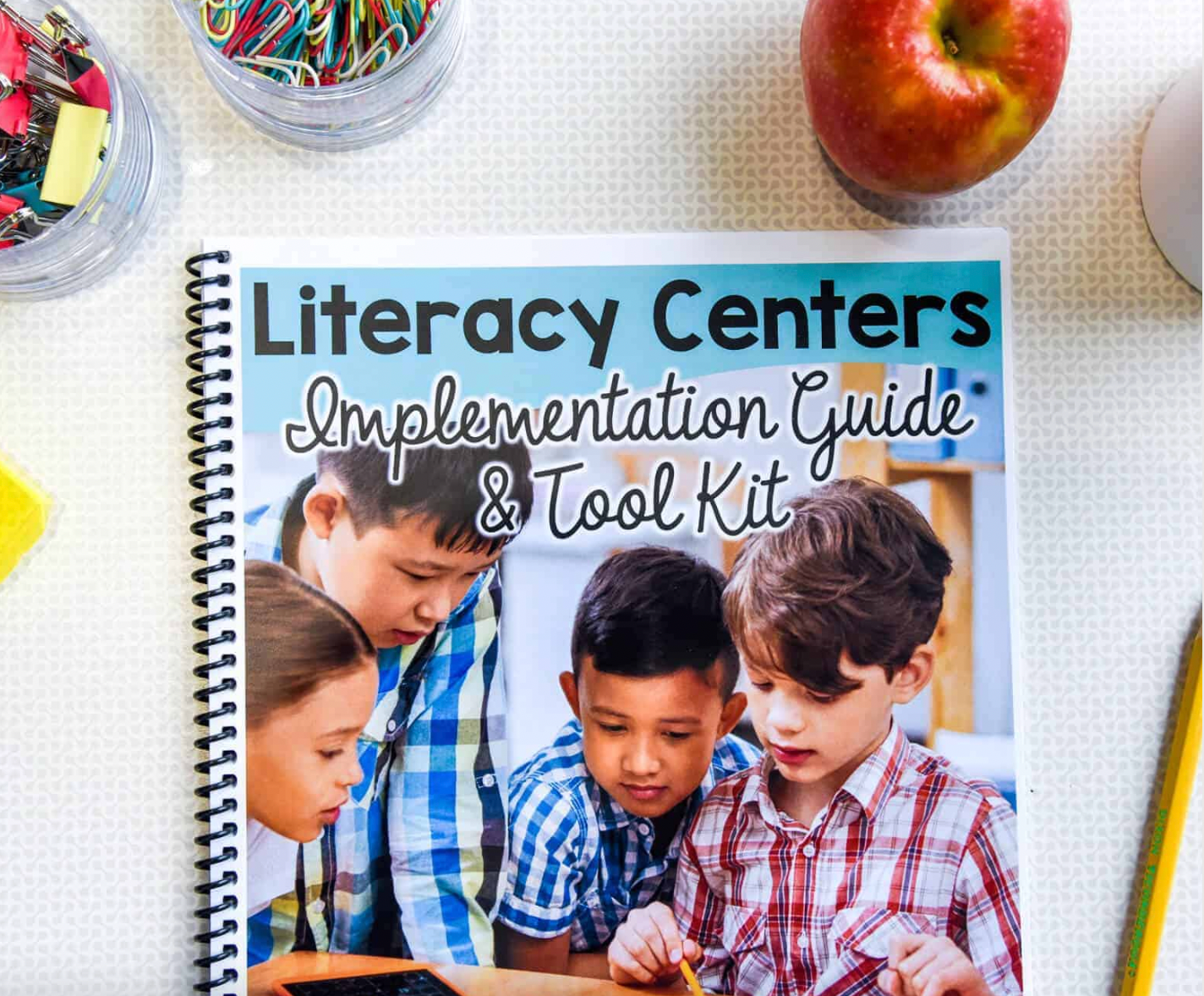When I first started teaching, the idea of implementing literacy centers was overwhelming, to say the least! How many centers do I need? What kinds of activities should I choose? How do I manage rotations? My list of questions went on and on.
However, I knew literacy centers would help me better meet the needs of my students, so I persisted. Through a lot of trial and error, I discovered several strategies for making the most out of literacy centers. Today I’m sharing my best tips and tricks with you!

Why Use Literacy Centers?
There are so many benefits to incorporating centers in your reading and writing block. The number one thing I noticed after using centers was that my students were on task for longer periods of time. When students are actively engaged in a task, they are more likely to internalize what they are learning. This is a win-win for both you and your students!
Besides seeing growth in student achievement, here are some other benefits I’ve found to using literacy centers:

- Accountability: Students quickly learn to be responsible for their own work, especially when they use a checklist or center log.
- Targeted Intervention: Using centers allows the teacher to tailor the content to individual student needs.
- Collaborative Learning: When students work together, they develop higher-thinking skills and the ability to problem-solve.
- Increased Independence: Literacy centers promote autonomy and encourage students to think for themselves.
Making Literacy Centers Work
Planning
Start small by choosing 4-5 centers based on student strengths and areas of need. Decide whether the activities will be used for pre-teaching, re-teaching, independent practice, or assessing. Consider your time and space constraints as well. You want to ensure that you can make centers consistent within your weekly schedule. Since I prefer to meet with students at least once a week, I create 5 groups that will rotate through the centers together. If you have a co-teacher or aide available, utilize their help too!
Pre-Teaching
Before you jump into centers with your students, spend time introducing the routines, expectations, and content of each center. This is critical for making your centers a success! Do this slowly over a few days (or even weeks), practicing one center to start and gradually adding in activities. It’s also important to review the expectations for transitioning between centers, asking for help, and finding materials.
Schedules & Rotations
There’s no “right” way to set up literacy center rotations. However, I’ve found that creating a visual display that students can reference is extremely helpful. You can use a pocket chart, center wheel, whiteboard magnets, or even a digital display. I like to keep it low maintenance so that it is flexible to change as needed. Post each group’s schedule and change it daily or weekly. Depending on the grade level of your students, 15-20 minutes per center is an ideal time. My students rotate through 3-4 centers a day.

Possible Literacy Centers
Word Work
Word work centers focus on spelling, vocabulary, and phonics activities. These are one of my favorite types of centers to use because they are so low-prep once they are established. The basis of the center stays the same from week to week; simply change out your word list!
Task Cards
Task cards are great for a variety of reading skills, such as figurative language, reading comprehension, or grammar. Students work through each card and use a recording sheet to keep track of their answers.
Sorting Games
I love to use sorting to give students hands-on practice with the skill. There are so many concepts you can use to create sorting games, but here are some I’ve used before:
- synonyms and antonyms
- point of view (1st person, 3rd person)
- vowel sounds: long a vs. short a
- types of sentences
- syllables types
Color-by-Code
These are one of my students’ favorite literacy centers! As students work through a multiple choice activity, they determine the code by choosing the correct answer. This color code allows them to complete a mystery picture. I love these color-by-code centers because they are, by nature, self-grading!
Resources
Want a step-by-step guide to beginning literacy centers in your classroom? Check out my FREE Literacy Center Implementation Guide and Toolkit. This handy guide will walk you through getting centers up and running in your classroom. It also includes posters and a center log for students.
Don’t have the time to create your own centers? Grab my year-long Literacy Centers bundle, with activities for grades 2nd-5th. This comprehensive resource includes a full month of 10 different reading and writing centers.







